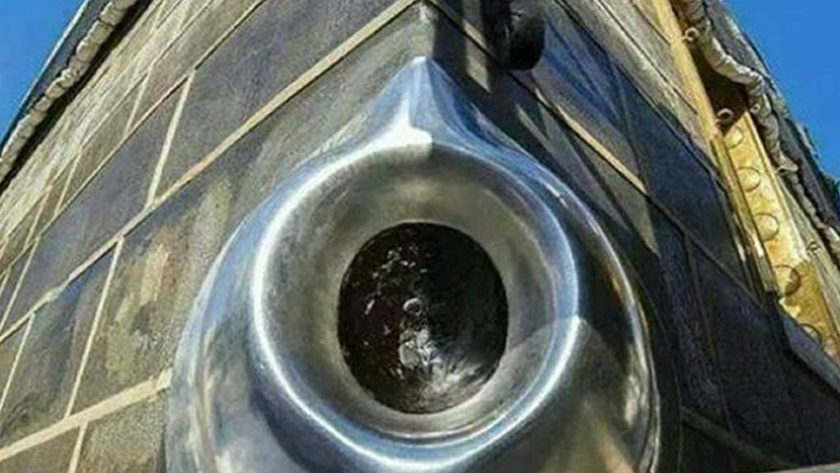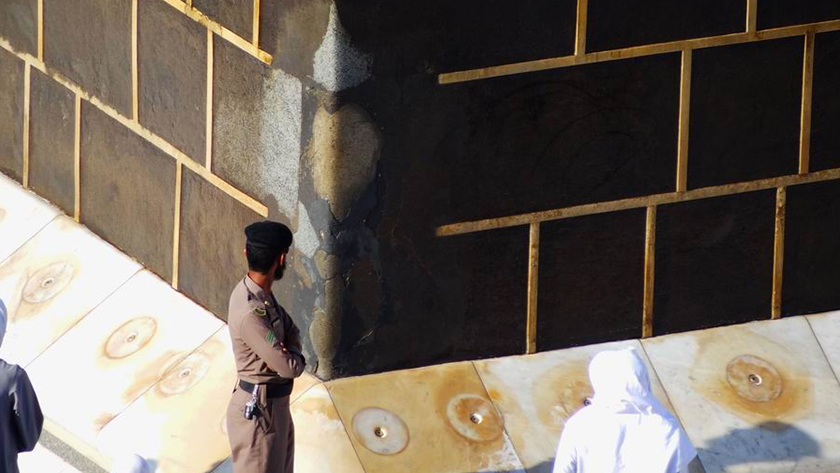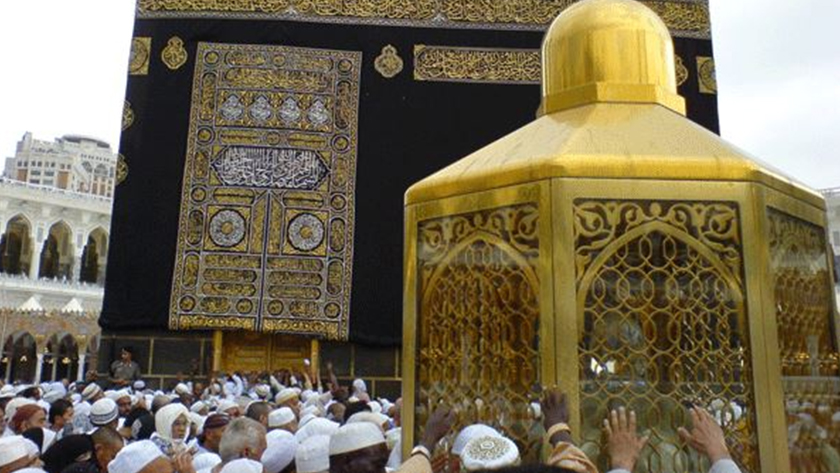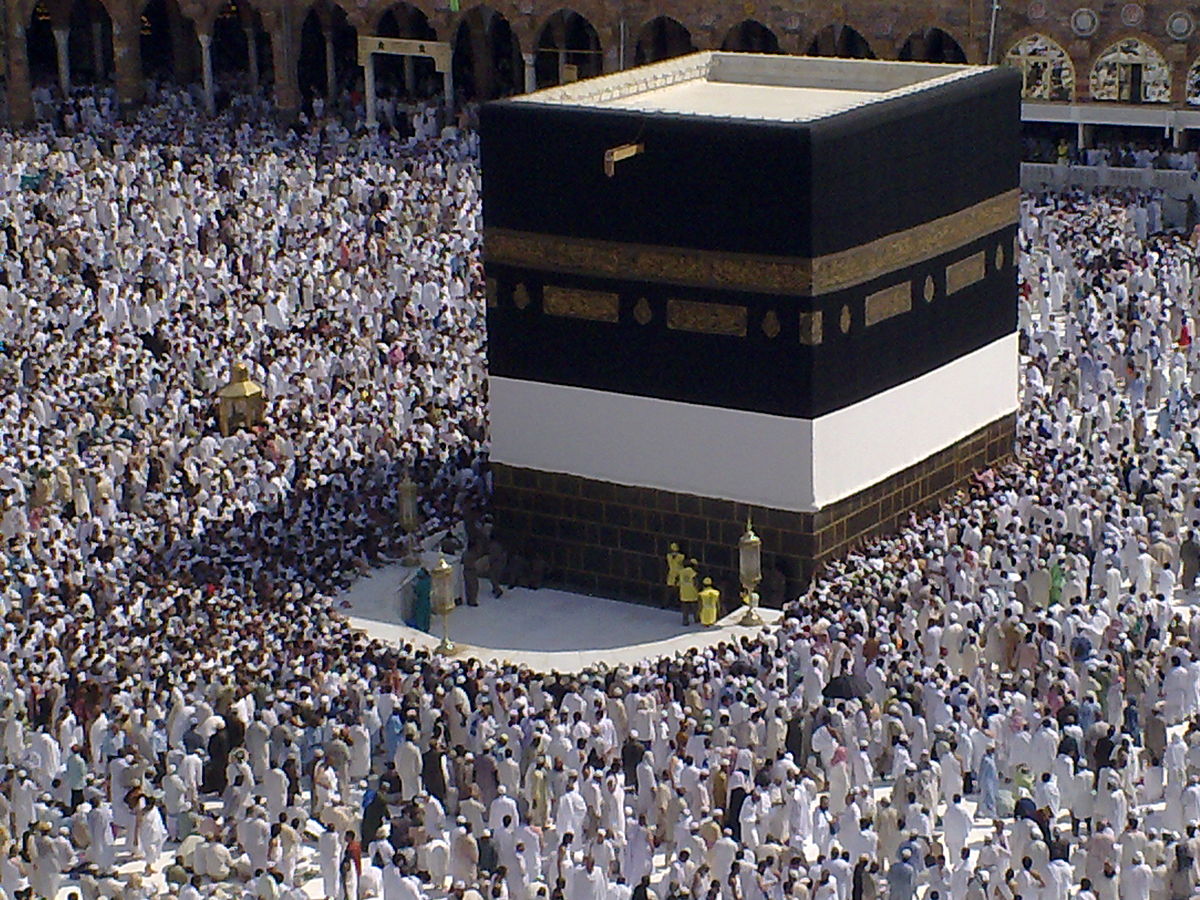Iran Press/ Hajj Pilgrimage: The sacred Ka’ba is the first-ever manmade structure on Planet Earth, built by Divine Commandment by the Father of the human race, Adam, and which serves as the qibla, or focal point of the daily prayers for Muslims around the globe.
When Adam was cast onto the Earth from Paradise, separated from his wife Eve, whom God as a trial lowered her to a different part of the planet, the lonely husband, according to a narration from Imam Mohammad Baqer (AS), the 5th Infallible Heir of Prophet Mohammad (blessings of God upon him and his progeny), complained to God of his unsheltered loneliness and the feeling of fear amidst the wilderness.
The 5th Imam says God sent down to him a tent from heaven that was erected by Archangel Gabriel on the place on which the Sacred Ka’ba was to be built. The main poles of this heavenly tent were rods of ruby, while its pegs were of pure yellow gold, and its ropes were woven of purplish thread. In its four corners, four stones were placed four stones: a stone from Mount Safa, a stone from Mount Sinai, a stone from Mount Salaam, and a stone from Mount Abu-Qubais.
In ayah 21 of Surah Hijr, God says: "There is not a thing but that its sources are with Us, and We do not send it down except in a known measure."
In ayah 75 of Surah Anaam, God Almighty says:
"Thus did We show Abraham the dominions of the heavens and the earth, that he might be of those who possess certitude."
Related news:
Holy month of Zil-Hijjah begins
These and several other ayahs indicate the fact that the world, including the earth and the sky, and all that is therein, in addition to their outward appearance have deep inner meaning and are reflections of the celestial realities, which means our Planet has miniaturized models of heavenly emblems. Thus, the Sacred Ka’ba, which is the center of pilgrimage for mankind, and in which was born Imam Ali ibn Abi Taleb (AS), the second-most blessed person after the Best of Creation, Prophet Mohammad (blessings of God upon him and his progeny), is the replica of Bayt al-Ma’mour in the celestial realms, around which the angels circumambulate.
Thus, similar to the circumambulation of the angels around the Divine Throne, glorifying God Almighty and seeking His forgiveness for the servants, the human beings on the Earth circumambulate the Ka’ba in the manner of angels.
Related news:
Muslims hold glorious Hajj pilgrimage after 2-year halt
The Ka’ba, as is evident by its name is cube-shaped, built of black hard stones of various sizes.
Each corner of the Ka’ba faces the four cardinal points, that is, East, West, North, and South, and are called ‘rokn’ in Arabic.
The eastern corner is known as “Rokn Hajar al-Aswad” since the sacred black heavenly stone is placed in this corner.
 “Rokn Hajar al-Aswad”
“Rokn Hajar al-Aswad”
The northern corner is known as “Rokn Iraqi” since it faces the direction of Iraq; the western corner is known as “Rokn Shami” since it faces the direction of Syria, and the southern corner is known as “Rokn Yemani” since it faces the direction of Yemen.
Just before the Rokn Yemani, as the circumambulating pilgrims can discern, the wall of the Ka’ba bears traces of a crack, indicating that it was this section of the wall that miraculously parted and then joined together to allow the monotheist Hashemite lady Fatema bint Asad (peace upon her), the wife of the Prophet’s uncle and guardian Abu Taleb (PuH), to enter the most sanctified place on Earth in order to give birth to Imam Ali (AS).
Three days later, to the bewilderment of the pagan Arabs, this same miracle of the splitting of the wall and it's joining together was repeated to allow this virtuous lady to come out of the Sacred Ka’ba with the newborn, as her husband, along with the Prophet eagerly waited to receive the radiant infant, as if Divine Providence had already informed them of this occurrence.
It is interesting to note that though the Ka’ba has been rebuilt three times since this miracle occurred a millennium, four centuries and almost, the crack visibly remains, despite it being filled with lead by the Saudi Wahhabi cultist regime.

Around the Ka’ba, there are other holy places and other historic sites such as Maqam-e Ibrahim, where Prophet Abraham (PuH) had stood for prayer after circumambulation of the Ka’ba that he had rebuilt, and where by God’s commandment imprinted on the stony were the outlines of Abraham’s feet, which are preserved to this day.
 Maqam-e Ibrahim
Maqam-e Ibrahim
On the northern side of the Ka’ba, opposite its door, is a crescent-shaped wall known as “Hijr-e Ismael”, which used to be the house of Abraham’s firstborn son, Prophet Ishmael (PuH), and where he rests in eternal peace beside his virtuous mother, Lady Hajar (PuH), and along with several prominent saints.
 “Hijr-e Ismael”
“Hijr-e Ismael”
In the eastern corner of the Masjid al-Haraam that encloses the Sacred Ka’ba, is the famous spring of Zamzam, which miraculously gushed from the depths of this scorching desert land from under the feet of the toddler Ishmael when he cried in thirst and after his anguished mother, Hajar, in disparate search of water scampered seven times between the hillocks of Safa and Marwah supplicating sincerely to the Almighty – the selfless quest of a loving mother to save the life of her dear son, which God decreed among the obligatory rituals of the Hajj pilgrimage.
The Ka’ba is thus the supreme symbol of monotheism.
Once when the Prophet’s 6th Infallible Heir, Imam Ja’far Sadeq (AS) was asked why the Ka’ba has a quadrangular shape, he said: Because it is a replica of Bayt al-Ma’mour.
When asked, why the Bayt al-Ma’mour is quadrangular, the Imam said: Because it reflects the direction of the Celestial Throne. When the questioner asked why the Celestial Throne is quadrangular, Imam Sadeq (AS) said: “Since the monotheist base of Islam rests on the four phrases: Sobhan-Allah (or Glory to God), Al-Hamdu-Lillah (or Praised be God), La Ilaha Il-Allah (or there is no god except Allah), and Allaho-Akbar (or God is Greatest).
Thus, added the Imam, when we turn towards the Ka’ba during the ritual prayers and in other matters, we are in fact turning to monotheism. We face the Ka’ba, so that our inner self focuses on the Bayt al-Ma’mour, while our hearts attach themselves to the Celestial Throne, and our spirit meets the Divine Names.
The Ka’ba cannot be removed and taken to another place. We all know how God Almighty destroyed the elephantine hordes of Abraha the Abyssinian governor of Yemen when he tried to desecrate its sanctity. He thought none can stop him and when he asked the Prophet’s grandfather Abdul-Muttaleb why he did not ask him to spare the destruction of the Ka’ba, the latter replied: The Ka’ba has its Owner, that is, the One and Only God, and He will indeed protect it. The next morning as Abraha advanced with his troops and elephants, a flock of birds miraculously appeared in the sky and dropped pebbles on the elephantine force from their beaks and claws, wiping out Abraha’s seemingly formidable army.
When the Arabs took idol worship and polluted the Ka’ba, God commanded Prophet Mohammad (blessings of God upon him and his progeny), to march upon Mecca and cleanse the edifice of monotheism of the filth of idols. The Prophet accomplished the task and destroyed the 360 idols in and outside the Ka’ba. He then raised Imam Ali (AS) on his shoulders to pull down the chief idol from atop the roof of the Ka’ba, and thus restored it to Islam.

